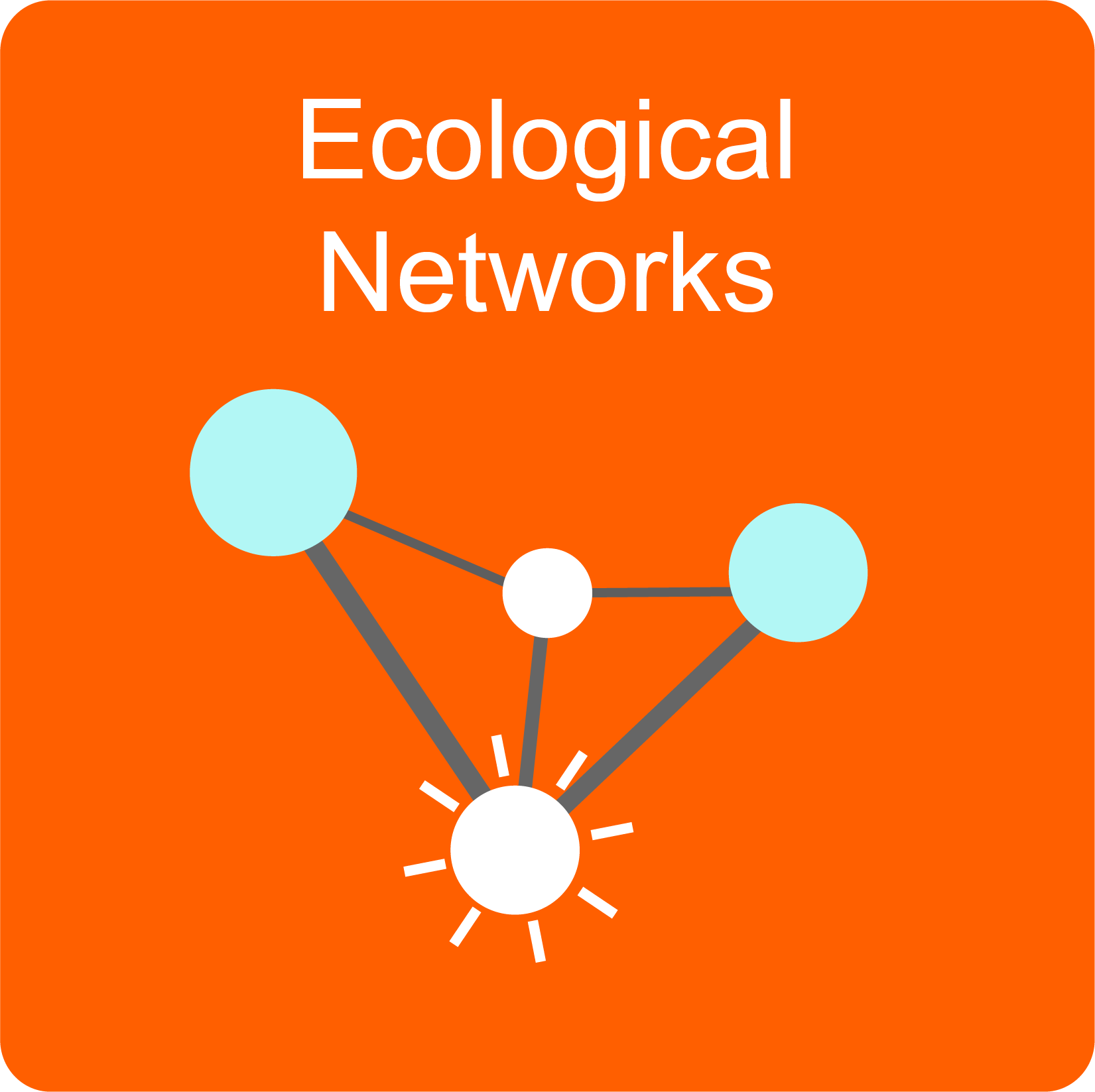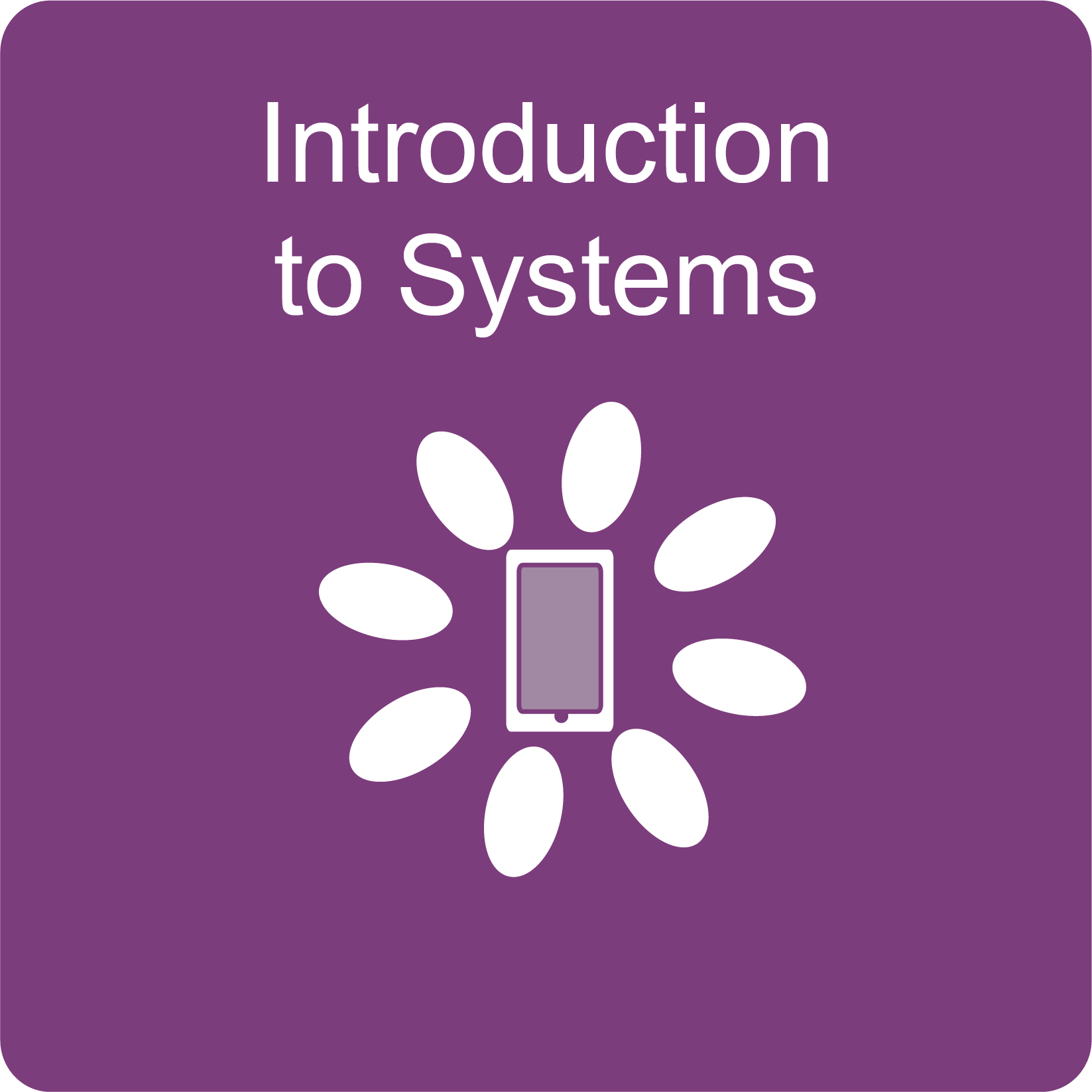Ecological Networks
Unit Plan

Course: Life Science, Integrated Science, STEM
Unit: Ecological Networks Part 1- Network interactions
Introduction:
This 2 week curriculum module gives middle and high school students an introduction to 1) the concept of systems (aka networks), 2) using software tools to analyze networks, and 3) using both experimentation and networks as a way to define hypotheses and test outcomes. Please see the tabs on this page for more information about the module.
Overview: To foster understanding, students first work with a familiar example – a cell phone network. Students manually build a schematic of a cell phone network within the class and learn how the complexity of networks makes their analysis very difficult to perform by hand. Students then use a simulated version of a computer program (Cytoscape) developed by leading scientists in the field of Systems Biology to perform sophisticated analyses of their cell phone network. By using this software, students study the network in ways very analogous to how real scientists study networks in Biology. These first two lessons can be found in our Introduction to Systems module.
Prior to Lessons 1-6 of Ecological Networks, students should study basic ecological network concepts such as the transfer of energy and matter (food webs and matter cycles).
In Lesson 1 of Ecological Networks, students are introduced to extreme forms of life (extremophiles). They also learn about the domain Archaea which contains some of the most ancient forms of life on the planet. Students next examine an environmental case study involving a large body of water that changes color after the building of a causeway. Students generate hypotheses to explain their observations and conduct an investigation to test one of their hypotheses. After interpreting their experimental data to draw conclusions, students incorporate the new information into the broader context to gain a systems view of this case study. Connections to several of the major themes in ecology are made throughout the case study.
Objectives:
What Students Learn
- Through the required Introduction to Systems module:
- A network is a system of interconnected parts. These parts may be organisms, genes, molecules, etc…
- Nodes are the parts of a network, and edges are the relationships between those parts of the network
- A network shows the flow of something through a system, including information (cell phone network), energy (food web), etc…
- Scientists use computer programs to analyze networks because networks are often very complex.
- Through Lessons 1-6 of the Ecological Networks module:
- Extremophiles are organisms that live in harsh environments and are often part of the Archaea domain.
- Observations lead to hypotheses and experimental design.
- An ecological disturbance in a single abiotic or biotic factor could affect an entire ecosystem.
- Natural events and human activities affect the Earth’s capacity to sustain biological diversity.
- The purpose of the micropipette is to measure and dispense small volumes of liquids.
- A microliter (μL) is a unit of measure for small volumes of liquids in which 1 μL equals .000001 L.
- The proper use of micropipettes including reading and setting the correct volume, measuring and dispensing intended volumes of a sample.
- The proper use of a spectrophotometer including how to set the wavelength, measure the absorbance, and use a blank to zero the spectrophotometer between two readings.
- A reference (blank) is needed to zero (calibrate) the spectrophotometer.
- Optical density (O.D.) is the unit used to measure absorbance.
- When the number of particles (food coloring) present in a given volume of the sample increases, the light absorbance increases too.
- Halobacterium are extremophiles thriving in high saline environments.
- An ecological disturbance in a single abiotic or biotic factor could affect an entire ecosystem.
- Natural events and human activities affect the Earth’s capacity to sustain biological diversity.
- Spectrophotometers are used to measure cell density.
- An increase in salinity allows for an increase in halobacteria population size
- The reliability of data increases with an increase in the size of the data pool/set
- To draw reliable conclusions, multiple trials/replicates should be performed
- Understand that energy flows in one direction and is stored in matter.
- Explain what is meant by trophic levels and what these indicate about relative energy. Understand the difference between producers, primary consumers, secondary consumers, etc. and place them at the correct trophic level.
- Identify the interdependent relationships between populations, communities, ecosystems and the biosphere (EALR 1.2 and 1.3).
- Analyze the effects of natural events and human activities on the earth’s capacity to sustain biological diversity (EALR 1.3).
- Explain how organisms can sustain life by obtaining, transporting, transforming, releasing, and eliminating matter and energy (EALR 1.3).
What Students Do
- During the required Introduction to Systems module:
- Students create and analyze a cell phone network.
- Students use the computer program Cytoscape to analyze the cell phone network.
- Students use a computer program (Cytoscape) track flow of information through a network
- Students use a computer program (Cytoscape) to interpret the impact of removing nodes on a network
- Students research answers to their own questions using provided Introduction to Extremophile reading packet.
- During Lessons 1-6 of the Ecological Networks module:
- Students use scientific thinking to consider how a disruption in an ecosystem has affected that network.
- Students design a scientific investigation to test how salinity affects halobacteria.
- Students use three different sizes of micropipettes to practice measuring given volumes of liquid using the proper technique.
- Students use a spectrophotometer to measure the absorbance of various dilutions of food coloring and determine the relationship between absorbance and the number of particles in a sample.
- Students implement a scientific investigation using appropriate technology, multiple measures, proper controls, systematic data collection and safe approaches.
- Students compare, contrast and critique divergent results from their investigations.
- Students analyze lab results of the Halo salinity lab to determine the optimal salinity for halobacteria growth
- Students interpret their experimental data to make conclusions about the observed pattern of halobacteria growth in the north arm of the Great Salt Lake.
- Students discuss/identify possible errors/sources of variation in their results.
- Students plan an appropriate investigation from the list of potential hypotheses
- Students describe energy relationships, emphasizing the concept of interdependence, between the different components, both abiotic and biotic, of The Great Salt Lake ecological network.
- Students analyze how an ecological disturbance in a single abiotic or biotic factor could affect an entire ecosystem. In this analysis, recognize the components, structure, and organization of systems and the interconnections within and among them.
Resources:
See the individual Resources Tabs within each Lesson page for all of the resources. This module requires Advanced Lab Preparation. Find that here (Google Doc | Word Doc)
Pacing Guide
This unit consists of 6 lessons designed for 50-minute periods (except where indicated). It is recommended that the teacher present their own lessons covering Ecology content before teaching the following lessons. Begin the lessons below at the end of your Ecology unit.
Lesson 1- Introduction to extremophiles
Lesson 2- GSL case study introduction
Lesson 3- Spectrophotometer and micropipette use
Lesson 4- Conducting halo salinity experiment
Lesson 5- Data analysis halo salinity experiment (2 periods)
Lesson 6- Revisiting the GSL network
If students are unfamiliar with networks, we also recommend teaching our Introduction to Systems Module before the Ecological Networks Model. It is a fairly short module consisting of the following two lessons:

Lesson 1- Cell phone network introduction (2 periods)
Lesson 2- Cytoscape cell phone network
Unit Assessment
Assessment networks and halo (Google Doc | Word Doc)
For the answer key, please contact us.
License:
![]() Except where otherwise noted, the Ecological Networks module, copyright Institute for Systems Biology (ISB) through Baliga Systems Education Experiences, is available under a Creative Commons Attribution-NonCommercial 4.0 International License. All logos, trademarks, and videos are property of their respective owners. This resource may contain links to websites operated by third parties. These links are provided for your convenience only and do not constitute or imply any endorsement or monitoring by ISB or ISB’s funding agencies. Please confirm the license status of any third-party resources and understand their terms of use before reusing them.
Except where otherwise noted, the Ecological Networks module, copyright Institute for Systems Biology (ISB) through Baliga Systems Education Experiences, is available under a Creative Commons Attribution-NonCommercial 4.0 International License. All logos, trademarks, and videos are property of their respective owners. This resource may contain links to websites operated by third parties. These links are provided for your convenience only and do not constitute or imply any endorsement or monitoring by ISB or ISB’s funding agencies. Please confirm the license status of any third-party resources and understand their terms of use before reusing them.

